Transforming depleted aggregate mines into healthy, productive environments is key to sustainable operations
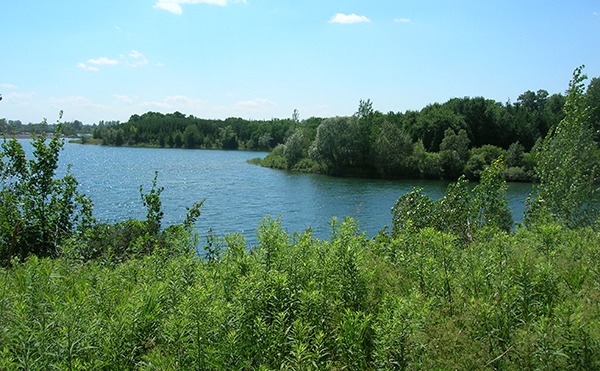
Thousands of rainbow trout teem through sparkling waters at the aquaculture facility run by Stoller Canada at McMillan Pond in the Aberfoyle area of south-central Ontario, about 40 minutes from Toronto.
Transformation of former pits and quarries into lakes and farmland is just one of the ways that CBM and Prairie Material, sister companies from Votorantim Cimentos’ North American operations (VCNA) are keeping their commitment to care for the earth and its resources while providing top-quality products for construction around the world.
Giving nature a boost
John Moroz, President and General Manager of Aggregates for VCNA, explains how the award-winning McMillan Pond restoration took shape.
“This area was a 100-acre site mined from the 1980s through 2004,” Moroz says. “In fact, the gravel from this pit built much of Mississauga and many of the local roads.” After extracting all available rock, the company was left with a site that included a 60-acre (24-ha) man-made lake.
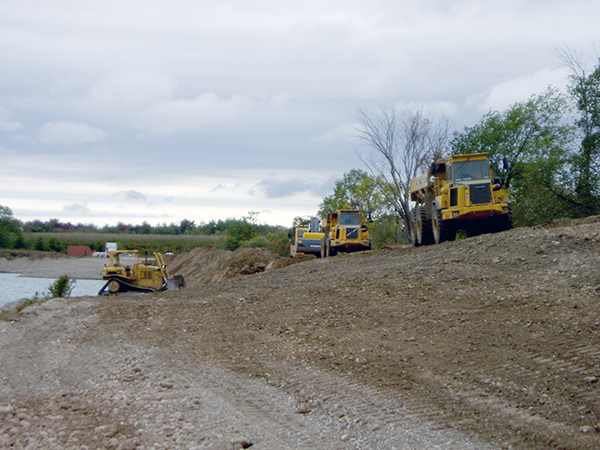
The original rehabilitation, completed in 2008 under the direction of Votorantim Cimentos’ Aggregates Land and Resources team, involved shaping wetlands and shoreline, planting trees and spreading native seeds.
But it takes more than just water to establish a thriving ecosystem. Though beautiful, the lake was sterile – and without further intervention, it wouldn’t have supported productive aquatic life for at least 20 years.
By 2013, when Stephen May, Western Region Lands Manager for CBM’s Aggregates came on board, the planted wetland was in real trouble.
“Apparently, the groundwater moving through the site had such low nutrient levels that the wetland was starving,” May explains.
As an avid fisherman and former Ministry of Natural Resources employee with strong interests in land rehabilitation and aquaculture, May thought that stocking fish would jump-start the renewal of the waters.
“Trout could do fine here — they can live in a low-nutrient environment and their waste would eventually help to increase the nutrients,” he remembers thinking.
AgriMarine, an aquaculture company based in British Columbia, proposed a broader plan in which new technology could support a commercial aquaculture facility that would provide crucial nutrients for the lake’s revival as well as capture excess waste to be turned into fertilizer. https://agrimarine.com/
Because the plan would generate a cash crop – the trout – and fish waste for recycling into fertilizer, it would also be cost-neutral, possibly even generating revenue. Votorantim Cimentos management gave the thumbs-up and AgriMarine began implementation in 2014.

How it works
The McMillan pond system is a marvel of modern aquaculture. Trout are contained in a floating raceway system made of PVC, where water is pumped through the system using an energy efficient airlift pump that simulates a stream experience for the fish. Much of the fish waste dissolves in the pond and fertilizes the lake ecosystem.
A significant portion of waste produced by the fish is also captured and pumped into biobags, de-watered and processed. “We collect and process the excess fish nutrient and use it to enrich the surrounding wetlands, where it fosters the growth of plants and microorganisms,” May notes.
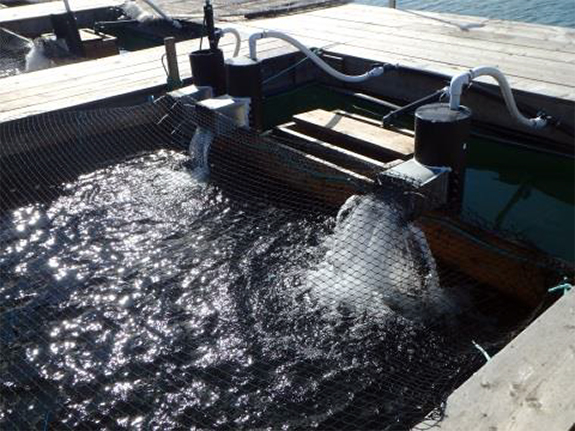
Fishing experts guide the project
The McMillan Pond aquaculture facility is now managed by Stoller under the expert direction of biologist Wayne Izumi, brother of famed fisherman Bob Izumi, star of Bob Izumi’s Real Fish Show.
 2015 was the first full year of operation, yielding nearly 60 tons (54 tonnes) of fish and the capture of almost 6 tons (5.44 tonnes) of waste that can be composted to create rich fertilizer.
2015 was the first full year of operation, yielding nearly 60 tons (54 tonnes) of fish and the capture of almost 6 tons (5.44 tonnes) of waste that can be composted to create rich fertilizer.
Most of the harvested trout go to a smokehouse 45 minutes away. Izumi’s staff closely monitors conditions in the lake, channeling key data back to Votorantim Cimentos’ CBM Aggregates team.
Izumi says the trout are greatly accelerating the process of creating a healthy lake.
”We are seeing positive response in the amount of vegetation, and the biomass of minnows and insects rising,” he reports. “Now that it is established, the challenge is how to make it work the best way possible.”
“The data is as valuable to us as the rent that Stoller pays for use of the site,” says Stephen May. “Wayne tracks all results closely so we can gradually develop best practices for lakes at other former aggregate sites. For example, we want to know our nutrient calculations are on track so we don’t over-fertilize the waters. Also, we want to know how many fish the operation can produce without upsetting the ecological balance.”
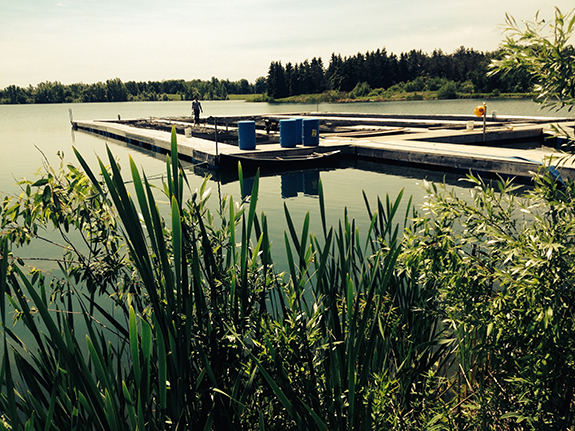
‘Triple bottom line’ serves society, earth, economy’
McMillan Pond — one of dozens of reclamation projects across Canada and the U.S. — is a prime example of Votorantim Cimentos’ global commitment to sustainable practices, an effort that encompasses our North American extraction and manufacturing operations.
“The way we see it, pretty much every day is Earth Day,” says Martin Vroegh, Director of Environmental Affairs for Votorantim Cimentos North America.
“Many people confuse sustainability with environmental friendliness,” Vroegh says.
“Our goal is to achieve true sustainability, a balance we think of as a ‘triple bottom line’: the point at which environmental, social and economic interests are all responsibly served.”
Pits to farms: another innovative approach
Not all former aggregate pits and quarries are ideal sites for creation of new lakes. Many above-water sites in the U.S. and Canada are instead turned back into farmland, but “with an eye to making the soil better and more productive than when we first acquired it,” says David Hanratty, Director of Land and Resources for Votorantim Cimentos North America.
 At a 20-acre (8 ha) former sand and gravel pit in Lakefield, Ontario, our experts came up with a plan to add manure and other rich organic matter to backfill, spurring the regrowth of soil microorganisms that went dormant while the soil was stored in deep berms on the edge of the pit.
At a 20-acre (8 ha) former sand and gravel pit in Lakefield, Ontario, our experts came up with a plan to add manure and other rich organic matter to backfill, spurring the regrowth of soil microorganisms that went dormant while the soil was stored in deep berms on the edge of the pit.
“We created an experiment where we would perform proper agricultural processes for nutrient management, testing to see whether we could accelerate the nutrient return to a level comparable to the surrounding farmland in the area,” Hanratty says.
Progress was measured by studying 10 acres (4 ha) of working farmland adjacent to the Lakefield site. “This made it possible to do a side-by-side comparison.
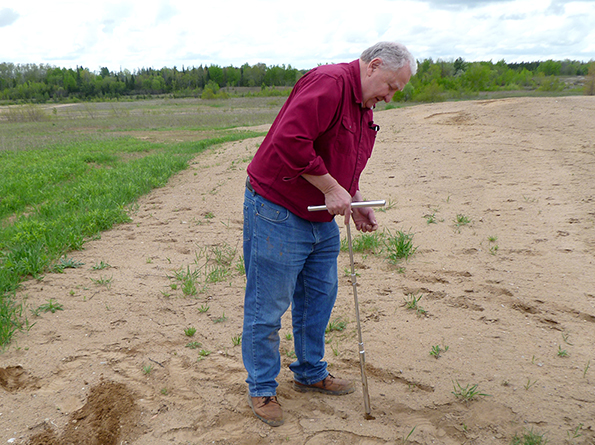
land partners with CBM to test results
After two years of working the soil by adding manure and tilling sacrificial crops into the land, we found that in some areas our soil was as good as the control site’s, and in others it was about 50 percent as good. The overall average was seventy percent. Based on that, we decided to invest another two years in active management to see whether the soil quality could be improved to equal or exceed the control site.
“As this goes forward, we’ll measure a number of parameters to make sure the elements needed for good agricultural soil are being returned,” Hanratty says.
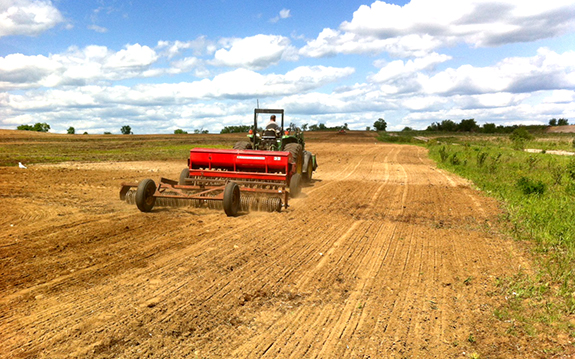
The practice of progressive rehabilitation
CBM and Prairie Material Aggregates operations embrace an industry-leading practice known as progressive rehabilitation, Hanratty notes — meaning that as extraction operations move to different areas of the site, the displaced overburden is moved to the area that’s been fully extracted and land restoration starts soon after.
“This keeps the footprint of the operation smaller, and we can restore the land more efficiently with less time delay. There’s an added benefit in that we only have to move the extracted soil once. The overall rehabilitation goal is to restore two acres for every acre disturbed by extraction activities,” he says.
In the U.S., there are dozens of aggregate-to-farmland sites in Indiana and Illinois being rehabbed under the direction of the VCNA Land and Resources team.
One innovative approach is to partner with local schools to work the restored sites, opening the land to horticultural projects that help young people grow right along with the crops. Chris Basham, Plant Manager for Prairie Material Aggregates near Pontiac, Illinois, is taking the lead on this test project in Lexington County, Illinois.
Future farmers learn as they restore the soil
“We’re working with students at four local high schools who are part of the Future Farmers of America,” Basham says. “The students will be working more than 20 acres of reclaimed ground around area lakes.”
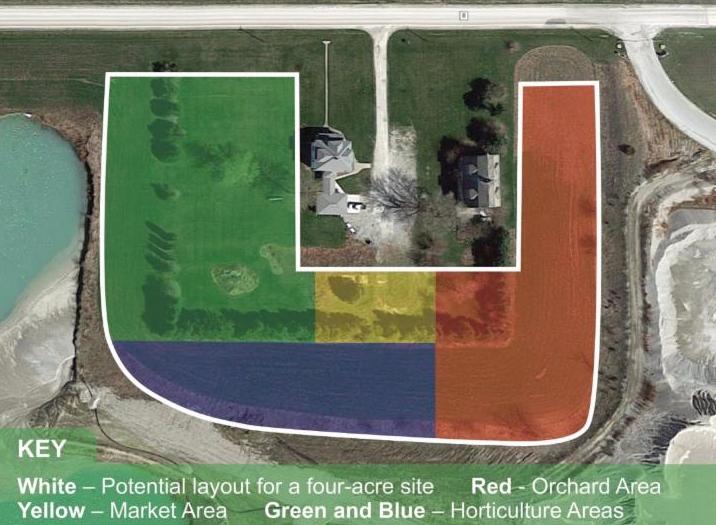
aggregate operation in Pontiac, Illinois
tandard fruits and vegetables will be grown, with eventual plans for an orchard. Produce will be sold at local farmer’s markets and revenues will go back to the high schools to support agricultural education programs. More than 300 students are expected to participate.
The program pays dividends for the business too, in the area of product development. “We’re in the heartland of America’s farms, and agricultural lime is one of our top-selling products. The Lexington County project gives us a chance to gather data on how well our lime works in the field,” Basham says.
‘We are interim users of the land’
“For our aggregates businesses, it’s crucial to keep in mind that we are only interim users of the land,” Dave Hanratty observes. “Our goal is to create a blueprint for land restoration that not only works for our companies around the world, but also one the whole industry can follow.
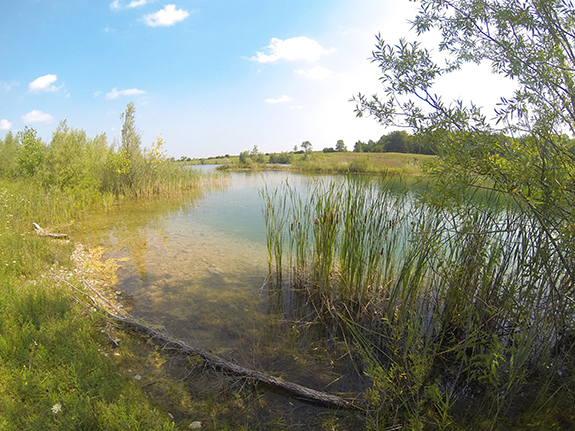
“Seeing our results, other aggregate producers will know how to restore exhausted sites within three to five years, and at times with virtually zero net cost. They will know the steps to take to bring the land back to equal or better condition than when extraction first began.”
It’s a long-term view, says Hanratty, one that pays lasting dividends for the company, the environment and society as a whole.
This is the first in a series on global sustainability for Votorantim Cimentos’ North American operations. Look for future stories on cement production and energy use, concrete recycling and more. View our global commitment to sustainability here.
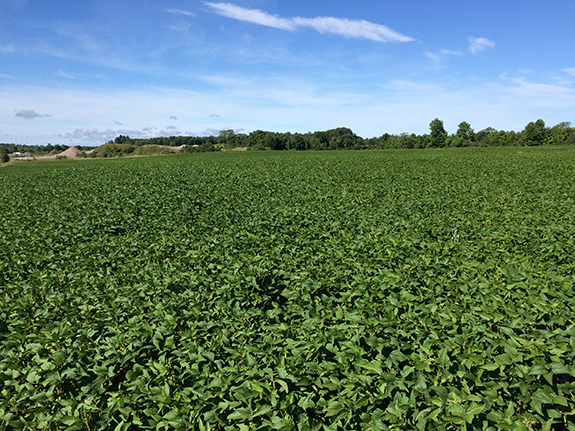
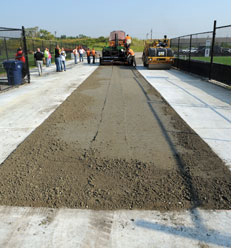
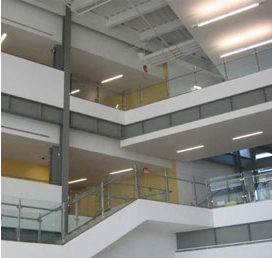



 United Materials
United Materials Superior Materials
Superior Materials Prairie Materials
Prairie Materials Canada Building Materials
Canada Building Materials VC Global
VC Global